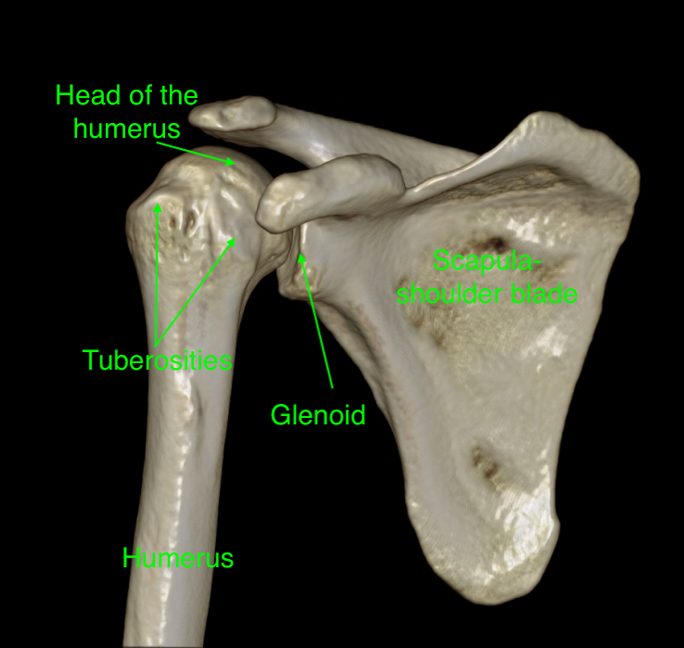COMMON SHOULDER INJURY CONDITIONS & TREATMENTS
The shoulder is a large and complex “ball and socket” joint.
The joint comprises of the articulation of the arm bone (the humerus) with the shoulder blade (the scapula). The shoulder blade is a large but thin, triangular-shaped bone that has many muscular attachments. At its outer or lateral end, it has an oval condensation of bone called the glenoid that forms the “socket” of the shoulder. The humerus bone has an expanded, rounded end that forms the “ball” of the shoulder joint. There are also two large bony bumps (the tuberosities) for major tendon attachments.
Even though it is a ball and socket joint, the glenoid or socket is very shallow. It provides minimal bony constraint for the shoulder. The bony arrangement has been likened to a golf ball on a tee. This lack of restraint allows the shoulder to have an extensive range of movement not limited to any one plane. This broad range of motion comes at a price, though. The shoulder is one of the most unstable joints in the body. A ring of fibrocartilage (the glenoid labrum) attaches around the circumference of the socket. The labrum deepens the socket. Strong ligaments also connect to the labrum.

Articular cartilage (also known as the “gristle”) lines the bones of the shoulder joint. The articular cartilage is an incredible structure that is very smooth, allowing friction-free motion as the shoulder moves throughout its range.
The joint capsule holds the bones together. Strong ligaments reinforce the capsule. A group of muscles called the rotator cuff, surround the joint. The cuff muscles arise from the scapula and insert into the tuberosities. They help move the shoulder and also play a significant role in holding the two bone of the shoulder joint together.
Many large muscles cross the shoulder joint and insert into the upper part of the humerus. These muscles include the pectoralis major, deltoid and latissimus dorsi. The predominant movements of the shoulder are flexion (forward elevation) and extension; abduction (lifting the arm out sideways) and adduction (moving the arm across the body); and external and internal rotation. Of course, many of these movements are combined. The primary function of the shoulder, along with elbow, is to position the hand where it is required.
MEET DR. BROWN
An expert at diagnosing the causes of knee, shoulder & hip problems, as a result of his years of experience and additional training. He will recommend a treatment plan tailored to your needs, which will only involve surgery if all other options are have been attempted or are unsuitable.
Call us on (03) 5223 3151 Book an appointment today.
UNDERSTANDING SHOULDER ANATOMY
ROTATOR CUFF TEARS
Hidden
SHOULDER INJURIES
Dr Brown has the expertise in dealing with all other types shoulder injuries and will be able to diagnose and recommend the best treatment options available.
SHOULDER ARTHRITIS
Hidden
Shoulder INSTABILITY
Dr Brown has successfully treated many patients with shoulder instability. After a thorough patient consultation, Dr Brown can recommend the most suitable non-surgical and surgical treatment to stabilise the shoulder.

